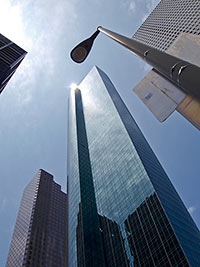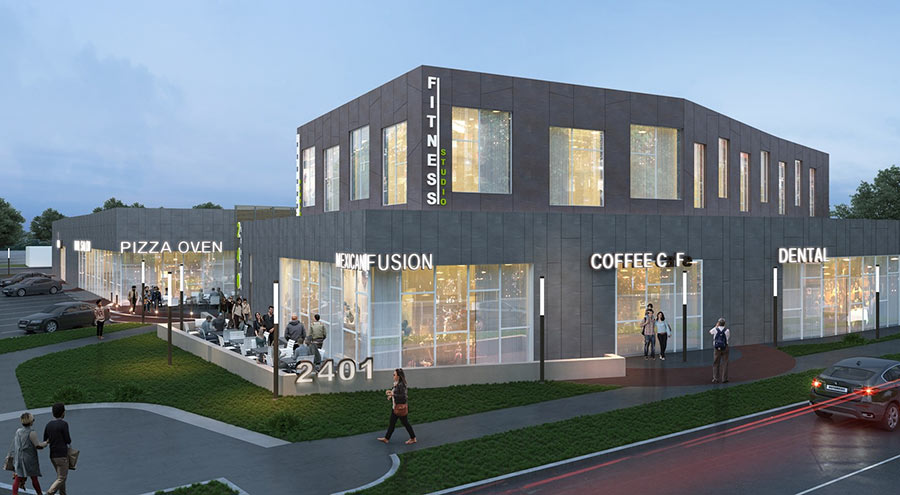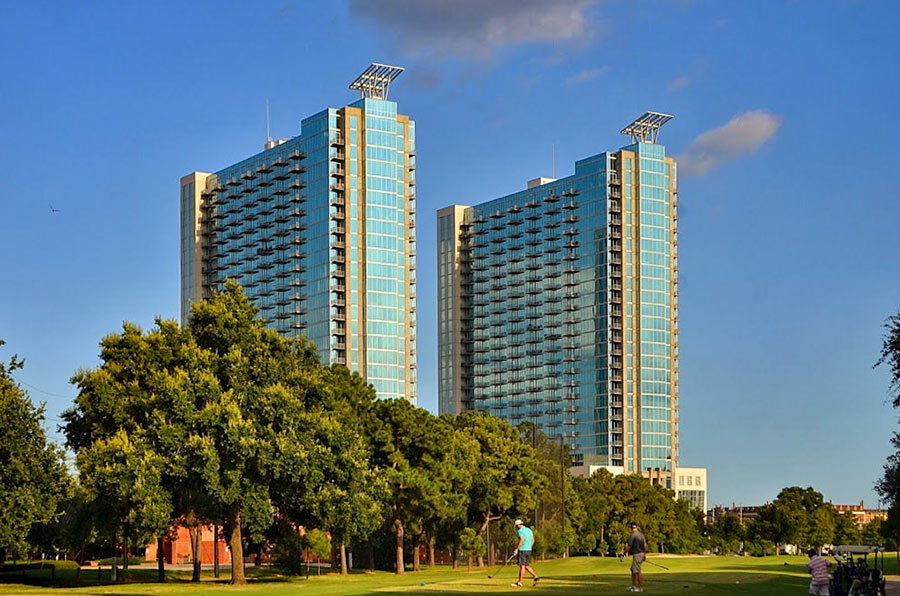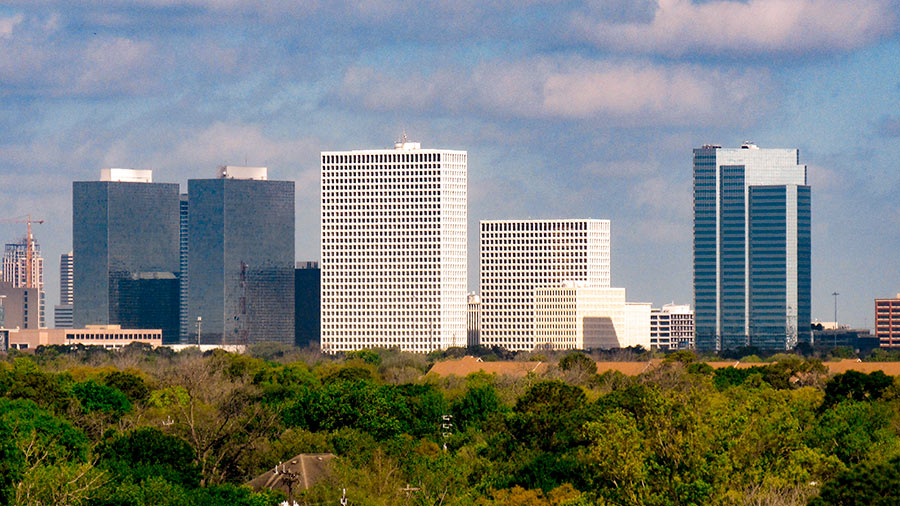HOW TO KEEP PROPERTY TAXES LOW — AT THE TOP  Using figures from a study put together by the Service Employees International Union last year in support of striking janitors, Steve Jansen’s cover story in this week’s Houston Press highlights some spectacular feats of Houston highrise taxcutting: “For the 2011 tax year, if the owners of a class A skyscraper or office complex protested HCAD’s appraised value in front of HCAD’s appraisal review board or district court, they were 77 percent likely to have the value cut (and Âalmost always by millions). By contrast, only 55 percent of owners of single-family homes won their appeals with HCAD.” Total resulting savings on those high-dollar tax bills: $58 million in 2011 alone. This year, HCAD is raising the market valuations on many of the city’s fanciest office buildings by more than 50 percent. But don’t expect those numbers to hold when the companies have lawyers at the ready. For 2012, 70 percent of large downtown commercial office property owners went ahead with property-tax lawsuits against HCAD. [Houston Press] Photo of Wells Fargo Plaza, which through lawsuits and negotiated settlements gained valuation reductions totaling $380 million between 2006 and 2011: Matthew Colvin de Valle [license]
Using figures from a study put together by the Service Employees International Union last year in support of striking janitors, Steve Jansen’s cover story in this week’s Houston Press highlights some spectacular feats of Houston highrise taxcutting: “For the 2011 tax year, if the owners of a class A skyscraper or office complex protested HCAD’s appraised value in front of HCAD’s appraisal review board or district court, they were 77 percent likely to have the value cut (and Âalmost always by millions). By contrast, only 55 percent of owners of single-family homes won their appeals with HCAD.” Total resulting savings on those high-dollar tax bills: $58 million in 2011 alone. This year, HCAD is raising the market valuations on many of the city’s fanciest office buildings by more than 50 percent. But don’t expect those numbers to hold when the companies have lawyers at the ready. For 2012, 70 percent of large downtown commercial office property owners went ahead with property-tax lawsuits against HCAD. [Houston Press] Photo of Wells Fargo Plaza, which through lawsuits and negotiated settlements gained valuation reductions totaling $380 million between 2006 and 2011: Matthew Colvin de Valle [license]





So it’s supposed to be shocking that high priced lawyers and consultants have a better success rate with appeals than individuals?
It’s not a perfect system, and its certainly not very transparent. However, I don’t feel that the SEIU’s criticism is especially meaningful. Successful protests are fundamentally linked to having a good argument and good evidence that the property had been noticed at an excessive value. If there are fewer successful residential protests than commercial protests, then that would imply that the initial noticed values are more favorable to residential properties than to commercial.
There are also other factors that explain the difference in the success rate of commercial and residential protests.
Property tax law in Texas requires that commercial properties be assessed according to a fee simple valuation assumption (the SAME basis as most residences), however HCAD does not presently adjust for those factors from their sales comps or cap rate studies for commercial properties.
That means, to give one example, that the impact of the Hess Tower comp bleeds into every Class A+ office asset in the metro area even though it is physically and functionally superior to all of them (with maybe one or two exceptions) and even though it has a single extremely creditworthy tenant on a long-term net lease. To a purchaser of Hess Tower, it was sort of like buying a Hess Corp. bond — and with a very senior position in terms of collectability; they’re paying to acquire the rights to that one awesome (!) lease more than for the land, concrete, steel, and glass.
Although leases might be indicators of the market if aggregated as data, the leases themselves are intangible property (like currency, common stock in a corporation, or intellectual property), not taxable under the property tax code.
Another problem with HCAD’s income approach to value is that it fails to take deferred maintenance into account by adjusting the operating reserves for each building. Whereas a house or a commercial property valued on cost has attention paid to its physical condition, a decision to value on income throws that out the window and they just use a rule of thumb assumption for every single property across the board, regardless of age or condition. If there’s a problem with the entire system that affects all properties, state law and HCAD’s attitude is that each and every owner needs to show up to protest. Most of the commercial owners do; most of the residential owners do not.
So…as y’all can imagine, commercial property becomes a lot more complicated than residential, and this opens up numerous lines of argument for a consultant or an attorney. Having done this professionally in the past, my success rate was about 85%; it didn’t matter whether it was an office highrise, or a B&B in the Heights, or a BBQ shed on the side of the road in the northwest suburbs. If it is unfair to the poorer owners, it is only because they are less likely to know their rights and because they cannot afford to litigate every year.
But the other thing about residential protesting is that most of the protests repeat every single year. Since about 2009, HCAD has typically rolled lower post-ARB values from the prior year to the current year. (That doesn’t happen to commercial values, oh hell no!) There are exceptions in especially hot neighborhoods of the inner city; but in the vast majority of suburban areas, that means that the values have already been cut to the bone. Those protests are by their nature less successful, even when professionals are hired.
There are a lot of nuances. I could write a short novel on how convoluted the system is from county-to-county. (Nobody would read it.)
A lot of million dollar homes sell for cash and the real estate agents don’t release the sales prices. So HCAD doesn’t know the sales prices. Therefore, the HCAD assessed values for the homes in River Oaks and other high end neighborhoods are usually much lower than the selling prices.
This is such a joke. The only ones that win are the tax protesters.
.
Example: We have a building that’s $1m (hcad). Next year, HCAD says it’s $1.3m. Our tax protester goes and fights it back down to $1m. Saving us $300k in property tax value (let’s say that’s a savings of $6k off our bill). We give the protester ~25% of our savings. Or $1,500 to — in essense — keep our bill the same.
.
Multiply that across a bunch of buildings. It sucks. And if you’re a renter, before you say “LOL! Pay you fair share fat cat!”, first of all I’m not a fat cat and second of all the renters pay the property tax via rent increases (look at the rates in Montrose/Midtown lately?)
.
On our Holman building (that dump we bought about 6 months ago in Midtown that we’ve improved), the land value stayed the same but the “improved” value (i.e., the building), when up over 25,000%. Granted, it’s still likely lower than true market, but 25,000% *IN ONE YEAR*. Seriously? And we either fight it ourselves (time/$) or hire someone to do it (time/$). Why not raise it 500,000%? or 1,000,000,000%?
.
Talk about a DISINCENTIVE to improve a building!
.
City: “Good job on fixing up that dump. That place was a real eye sore and really drove down property values. You spent how much to make it better? Yikes. Well done. We noticed crime has dropped as well. That’s awesome. Fewer calls for us to have cops come out. We appreciate that. Saves the tax payers a lot of cash. Sweet, and we can raise the value on your neighbors since they’re not next to such a pile. Oh…! Just one more thing… before we forget, here is your new tax bill. We raised it a shit ton for you. Have a great day, take a red tag on your way out — saves us a trip. kthxbi
.
grrr.
@trey, I think there’s another more powerful nuance to the high end home values (especially new construction). As a builder/developer YOU put the value of the finished home on the permit paperwork and generally the city/county accepts it and even when they realize the under-assessed property, they can only raise it 10% a year. I’ve had 3.5mln home assessed for $500k and a $4.5mln home assessed for $1.5mln.